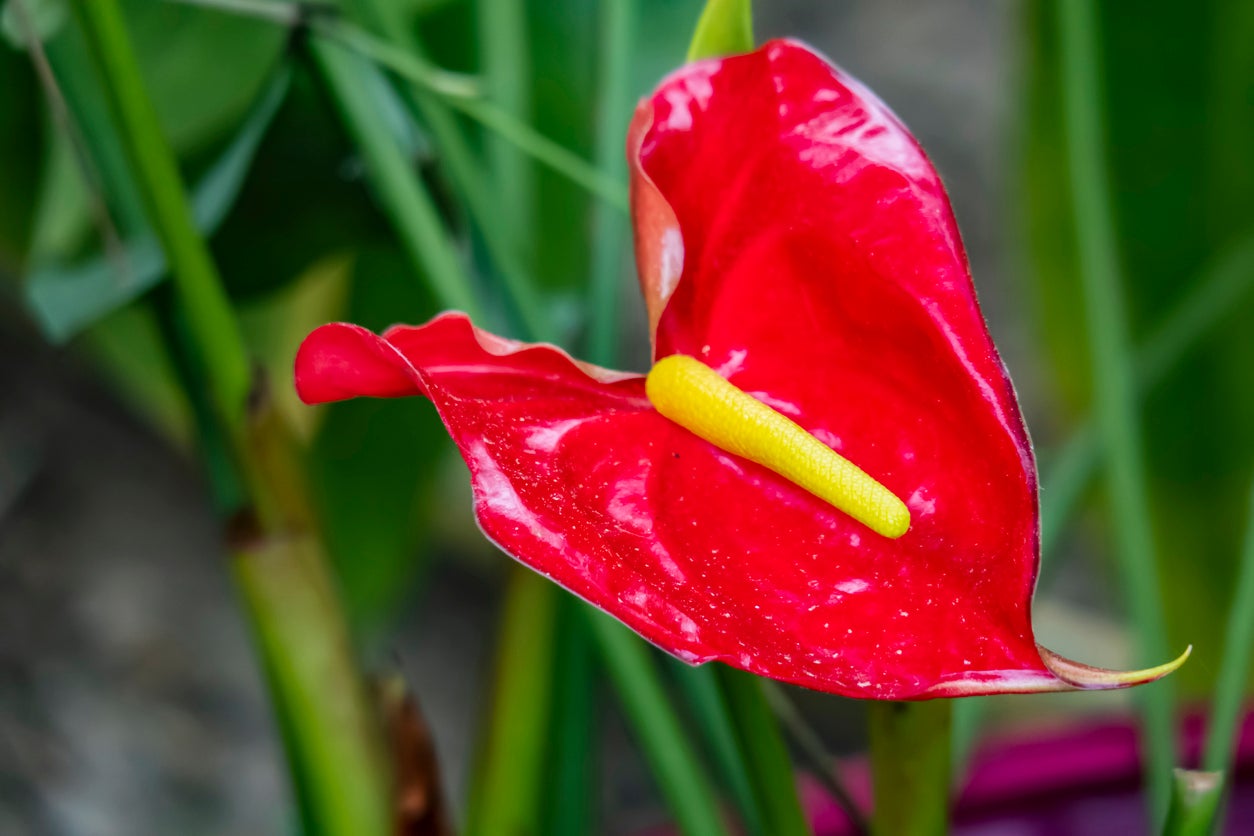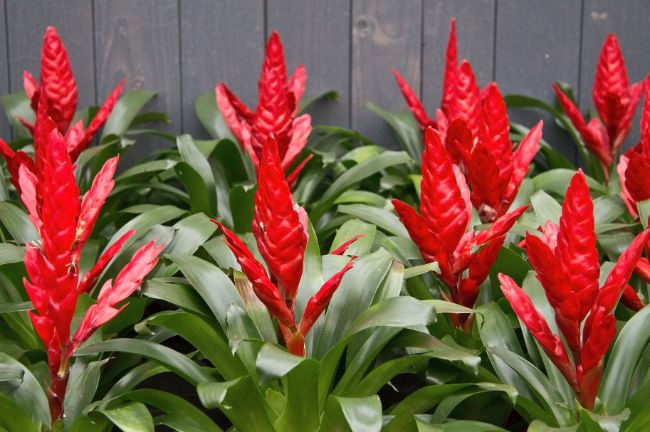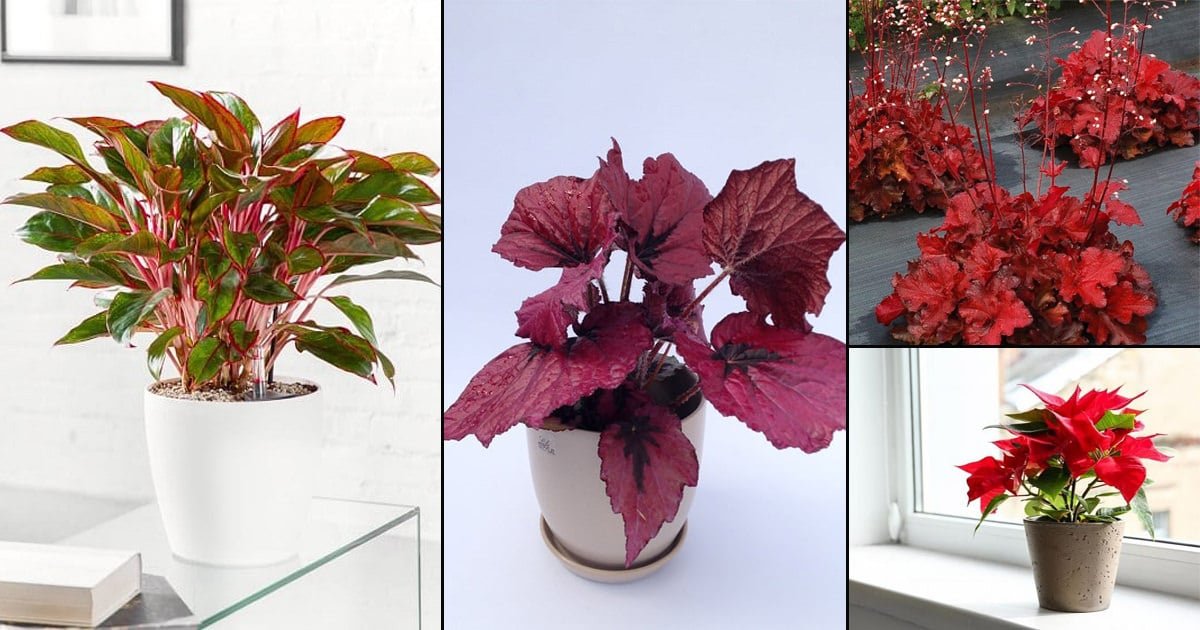Why Red Flowering House Plants are a Great Choice
House plants with red flowers are a great way to add a splash of color and vibrancy to any room. Not only do they brighten up the space, but they also have several benefits that can improve the overall ambiance and air quality of your home. One of the most significant advantages of having a house plant with red flowers is its ability to purify the air. These plants are known to remove toxins and pollutants from the air, creating a healthier environment for you and your family. Additionally, house plants with red flowers have a calming effect, reducing stress and anxiety, and promoting a sense of well-being. They can also be a great conversation starter, adding a touch of elegance and sophistication to any room. With their beautiful blooms and lush greenery, house plants with red flowers are a great choice for anyone looking to brighten up their space and improve their indoor air quality.
Top Picks for House Plants with Stunning Red Blooms
When it comes to choosing a house plant with red flowers, there are many options to consider. Here are some popular varieties that are known for their stunning blooms and relatively low-maintenance care:
The Anthurium, also known as the Flamingo Flower, is a popular choice for its long-lasting red blooms and heart-shaped leaves. It prefers bright, indirect light and consistent watering to thrive.
The Hibiscus is another popular house plant with red flowers that can add a tropical touch to any room. It requires full sun to partial shade and regular watering to keep its soil consistently moist.
The Christmas Cactus is a low-maintenance house plant with red flowers that can thrive in a variety of lighting conditions. It requires infrequent watering and can survive with neglect, making it a great choice for busy people.
These are just a few examples of the many house plants with red flowers that are available. When choosing a house plant, consider factors such as lighting, watering, and fertilization requirements to ensure you provide the best care for your new addition.
How to Care for Your Red Flowering House Plant
To keep your house plant with red flowers thriving, it’s essential to provide the right care. Here are some tips and advice to help you get started:
Lighting: Most house plants with red flowers require bright, indirect light to produce vibrant blooms. Placing them near an east- or west-facing window is ideal. However, some plants like the Hibiscus can tolerate full sun, so make sure to research the specific lighting requirements for your plant.
Watering: Overwatering is a common mistake that can lead to root rot and other problems. Check the soil moisture by sticking your finger into the soil up to the first knuckle. If the soil feels dry, it’s time to water. Water your house plant with red flowers thoroughly, making sure the pot drains well to prevent waterlogged soil.
Fertilization: Feed your house plant with red flowers with a balanced fertilizer during the growing season (spring and summer). Dilute the fertilizer to half the recommended strength to avoid burning the roots. You can also use a fertilizer specifically formulated for flowering plants to promote blooming.
Temperature: Most house plants with red flowers prefer daytime temperatures between 65-75°F (18-24°C) and nighttime temperatures around 55-65°F (13-18°C). Avoid placing them near heating or cooling vents, fireplaces, or drafty windows.
Humidity: House plants with red flowers prefer a humid environment, but they can adapt to average humidity levels. To keep your plant happy, you can place the pot on a tray filled with water and pebbles or use a humidifier nearby.
By following these care tips, you can enjoy vibrant blooms and a healthy house plant with red flowers for years to come.
The Best Soil and Fertilizer for Red Flowering House Plants
When it comes to choosing the right soil and fertilizer for your house plant with red flowers, it’s essential to select products that meet their specific needs. The right soil and fertilizer can make a significant difference in the health and vibrancy of your plant.
Soil: Look for a well-draining potting soil that is specifically designed for flowering plants. A mix with a pH between 6.0 and 7.0 is ideal for most house plants with red flowers. Avoid using garden soil from your outdoor garden, as it can compact and prevent proper drainage.
Fertilizer: A balanced fertilizer with a ratio of 20-20-20 (nitrogen-phosphorus-potassium) is a good starting point for house plants with red flowers. You can also use a fertilizer specifically formulated for flowering plants, which may contain additional nutrients like iron and magnesium to promote blooming.
Some popular soil and fertilizer products for house plants with red flowers include:
- Miracle-Gro Indoor Potting Mix: A well-draining potting soil that is specifically designed for indoor plants.
- Espoma Organic Indoor Plant Fertilizer: A natural, slow-release fertilizer that promotes healthy growth and blooming.
- Scotts Osmocote 14-14-14 Professional Plant Food: A balanced fertilizer that provides nutrients for up to 6 months.
Remember to always follow the instructions on the product label and start with a small amount to avoid burning your plant’s roots. By choosing the right soil and fertilizer, you can provide your house plant with red flowers with the nutrients it needs to thrive.
Pruning and Grooming Your Red Flowering House Plant
Pruning and grooming are essential tasks to maintain the health and appearance of your house plant with red flowers. Regular pruning helps to promote healthy growth, encourages blooming, and maintains the plant’s shape. Here are some tips to get you started:
Pruning: Use clean, sharp scissors or pruning shears to remove dead or damaged leaves and stems. Cut back leggy stems to encourage branching and promote a fuller plant. For plants like the Hibiscus, prune back the tips of the stems to encourage more blooms.
Grooming: Regularly inspect your house plant with red flowers for signs of pests or diseases. Gently remove any dead or dying flowers to encourage new blooms and prevent seed production. Use a soft-bristled brush to gently remove dust and debris from the leaves.
Timing: Prune and groom your house plant with red flowers during the growing season (spring and summer) to promote healthy growth and blooming. Avoid pruning during the dormant season (fall and winter) as this can cause stress to the plant.
Techniques: For plants like the Anthurium, use a technique called “pinching” to encourage more blooms. Pinch off the top inch of the stem to encourage branching and more flower production. For plants like the Christmas Cactus, use a technique called “segmenting” to encourage more blooms. Segment the stems into sections and replant them to encourage new growth and blooming.
By pruning and grooming your house plant with red flowers regularly, you can maintain its shape, promote healthy growth, and encourage vibrant blooms. Remember to always use clean and sharp tools to prevent spreading diseases and to make clean cuts to promote healthy healing.
Common Pests and Diseases to Watch Out for
As a responsible owner of a house plant with red flowers, it’s essential to be aware of common pests and diseases that can affect your plant’s health. Early detection and treatment can make a significant difference in preventing the spread of these issues and ensuring your plant continues to thrive.
Pests: Some common pests that can affect house plants with red flowers include spider mites, mealybugs, and scale. These pests can cause damage to the leaves and stems, leading to yellowing, droopy, or distorted growth. To prevent infestations, inspect your plant regularly, and isolate new plants before introducing them to your collection.
Diseases: Root rot, leaf spot, and crown rot are common diseases that can affect house plants with red flowers. These diseases are often caused by overwatering, poor air circulation, or high humidity. To prevent diseases, ensure good air circulation around your plant, avoid overwatering, and remove any dead or dying plant material.
Prevention and Treatment: To prevent pests and diseases, maintain good hygiene practices, such as washing your hands before handling your plant, and sterilizing pruning tools. If you do encounter an issue, treat your plant promptly with insecticidal soap or neem oil for pests, and fungicides for diseases. Remove any affected plant material, and adjust your care routine to prevent the issue from recurring.
By being aware of these common pests and diseases, you can take proactive steps to prevent them from affecting your house plant with red flowers. With prompt treatment and good care practices, you can ensure your plant continues to thrive and provide beauty and freshness to your home.
Creating a Beautiful Display with Your Red Flowering House Plant
With their vibrant blooms and lush foliage, house plants with red flowers can add a pop of color and elegance to any room. To create a beautiful display with your house plant with red flowers, consider the following ideas and inspiration:
Container Choices: Select a container that complements the color and style of your house plant with red flowers. For a modern look, choose a sleek, white or black pot. For a more rustic or vintage vibe, opt for a terracotta or wooden planter.
Decorative Accents: Add decorative accents such as pebbles, moss, or small ornaments to the container to create a visually appealing display. You can also add a decorative trellis or stake to support the plant’s stems and add height.
Arrangement Tips: Experiment with different arrangement styles to create a unique and eye-catching display. For example, you can group multiple house plants with red flowers together, or pair them with other plants with complementary colors and textures.
Lighting: Consider the lighting needs of your house plant with red flowers when creating your display. Place them near a sunny window or use grow lights to enhance their color and vibrancy.
Themed Displays: Create a themed display by pairing your house plant with red flowers with other decorative elements that match the theme. For example, you can create a festive holiday display by pairing your plant with red and green ornaments, or a tropical display by pairing it with seashells and driftwood.
By following these tips and ideas, you can create a beautiful and unique display with your house plant with red flowers that will add a touch of elegance and sophistication to any room.
Maintaining Your Red Flowering House Plant Over Time
To keep your house plant with red flowers thriving over time, regular maintenance is essential. This includes repotting, propagation, and seasonal care.
Repotting: House plants with red flowers typically need to be repotted every 1-2 years as they outgrow their containers. Choose a pot that is only slightly larger than the previous one, and use a well-draining potting mix to prevent waterlogged soil.
Propagation: Many house plants with red flowers can be propagated through stem cuttings, leaf cuttings, or division. This is a great way to share plants with friends and family, or to create new plants for your own collection.
Seasonal Care: House plants with red flowers have different needs during different seasons. For example, during the winter months, they may require less water and fertilizer, while during the spring and summer months, they may require more frequent watering and fertilization.
Pruning: Regular pruning is essential to maintain the shape and size of your house plant with red flowers. Remove any dead or dying leaves or stems, and trim back leggy growth to encourage bushy growth.
Pest and Disease Control: Regularly inspect your house plant with red flowers for signs of pests or diseases, and take action promptly if you notice any issues. This can include treating with insecticidal soap or neem oil, or removing affected leaves or stems.
By following these maintenance tips, you can keep your house plant with red flowers thriving and healthy over time, and enjoy their beautiful blooms for years to come.



:max_bytes(150000):strip_icc()/top-houseplants-with-red-flowers-4157721-3-07bf9ae6e41b4755b4c649e26896ebf6.jpg)




/Hibiscusflower-2356773_1920-59f25aa6685fbe0011575bc2.jpg)